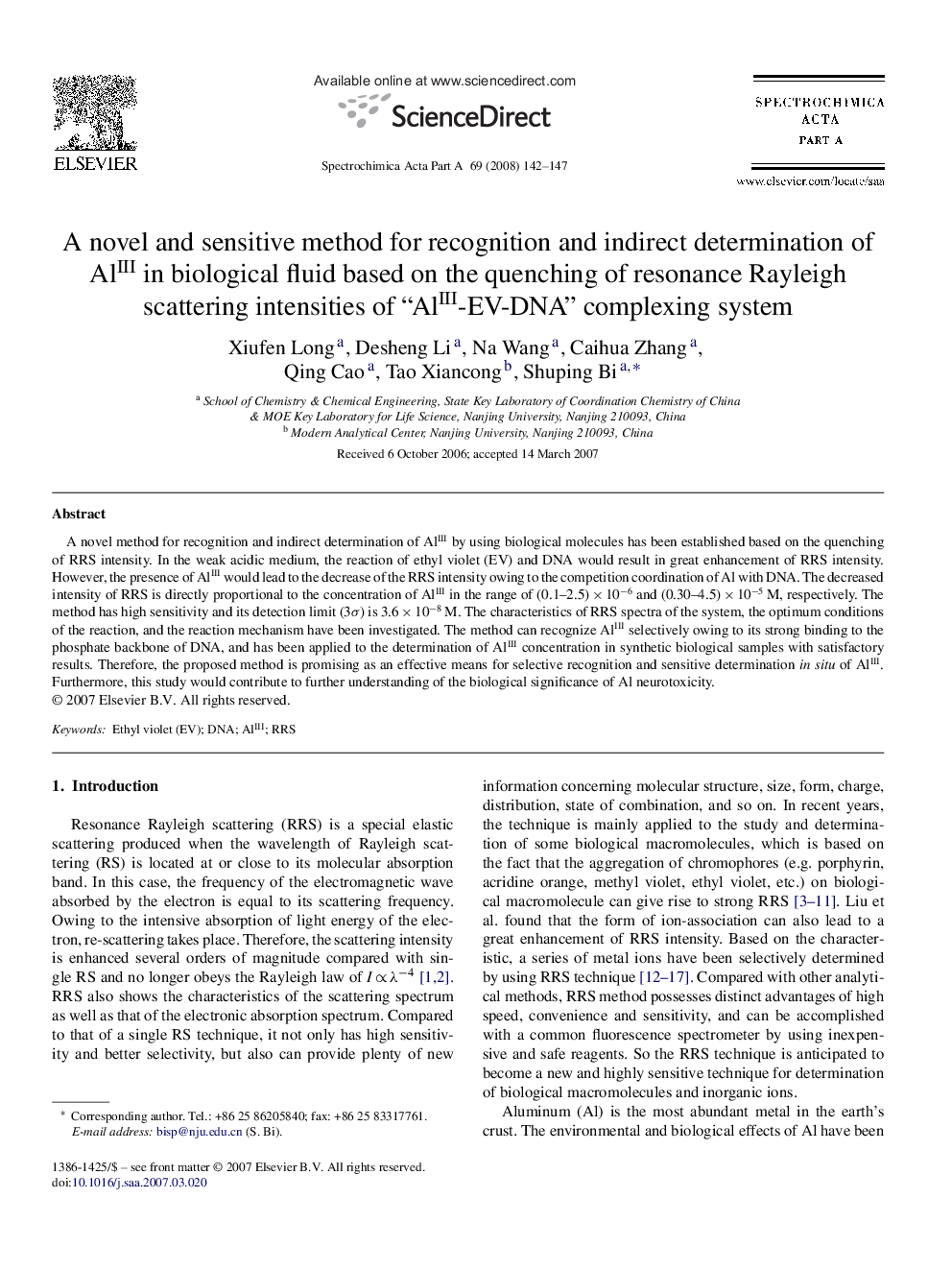| کد مقاله | کد نشریه | سال انتشار | مقاله انگلیسی | نسخه تمام متن |
|---|---|---|---|---|
| 1235257 | 968844 | 2008 | 6 صفحه PDF | دانلود رایگان |

A novel method for recognition and indirect determination of AlIII by using biological molecules has been established based on the quenching of RRS intensity. In the weak acidic medium, the reaction of ethyl violet (EV) and DNA would result in great enhancement of RRS intensity. However, the presence of AlIII would lead to the decrease of the RRS intensity owing to the competition coordination of Al with DNA. The decreased intensity of RRS is directly proportional to the concentration of AlIII in the range of (0.1–2.5) × 10−6 and (0.30–4.5) × 10−5 M, respectively. The method has high sensitivity and its detection limit (3σ) is 3.6 × 10−8 M. The characteristics of RRS spectra of the system, the optimum conditions of the reaction, and the reaction mechanism have been investigated. The method can recognize AlIII selectively owing to its strong binding to the phosphate backbone of DNA, and has been applied to the determination of AlIII concentration in synthetic biological samples with satisfactory results. Therefore, the proposed method is promising as an effective means for selective recognition and sensitive determination in situ of AlIII. Furthermore, this study would contribute to further understanding of the biological significance of Al neurotoxicity.
Journal: Spectrochimica Acta Part A: Molecular and Biomolecular Spectroscopy - Volume 69, Issue 1, January 2008, Pages 142–147